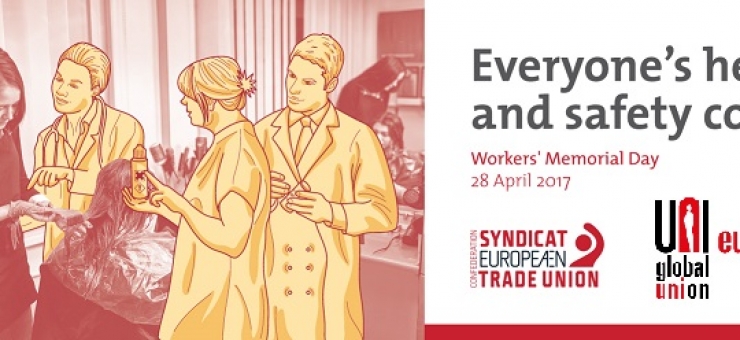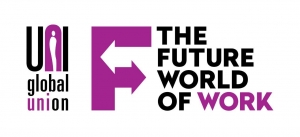News
Everyone’s health and safety counts

Everyone’s health and safety at work matters – for workers, his or her family and loved ones, and for employers. With over 168,000 people dying every year from work-related accidents and diseases, and over 3 million reported accidents at work (those resulting in at least four days’ absence from work), health and safety at work is a very serious issue for everyone.
'Health and safety at work is not a small thing' said Oliver Roethig, UNI Europa Regional Secretary. 'That's why UNI Europa is working actively on securing the best possible health and safety legislation for its members - and we are not giving up as we have shown with the social partner agreement on health and safety in the hairdressing sector. Workers' health is a big deal for trade unions.'
But some workers and risks are still overlooked when it comes to health and safety. Consider the facts
- Workers in precarious jobs, in small and medium sized enterprises, young workers, migrant workers and domestic workers are more at risk than permanent employees in larger workplaces. This is partly due to less training, information, and representation by safety reps for such workers, and in smaller companies.
- About one third of building workers are exposed to very dangerous substances like carcinogens, mutagens and reprotoxins. Among all occupations, the building workers have the highest probability of premature death. The building industry includes many small businesses, genuine and bogus self-employed workers, and migrant workers.
- Concentrated in unskilled and risky jobs, migrant workers have more musculoskeletal diseases, skin diseases and accidents at work.
- Young workers aged 15-24 are at particularly high risk of injury, suggesting the need for health and safety in education and training courses.
- Hairdressers, traditionally in small businesses and small workplaces, represent about 1 % of the entire workforce, but 20 % of women affected by work-related asthma are hairdressers.
- There is still too little recognition of the risk of exposure for pregnant women to certain workplace conditions (e.g. exposure to chemical agents, ionising radiation, electromagnetic waves, stress, excessive heat, lifting heavy weights, noise etc)
“Everyone’s health and safety matters” said Esther Lynch, Confederal Secretary at the European Trade Union Confederation. “Every worker has the right to a safe and healthy work environment, no one should have to choose between their job and their health.”
“One of the best things a worker can do for better information and action on risks to health and safety is join a trade union.”
Trade unions work to ensure that EU health and safety rules, that place responsibility on employers for systematic prevention of all risks and for all workers, are put into practice. Trade unions also continue to press for more EU and national action.
“Trade unions will continue our fight for better protection against exposure to cancer-causing substances” said Lynch. “We are also pressing for new regulations to tackle back, neck and elbow pain.”
The EU should encourage Member States to increase staffing resources available to their labour inspectorates to meet the ILO recommended target of no less than one inspector for every 10 000 workers.
For fatal and non-fatal accident statistics click here

